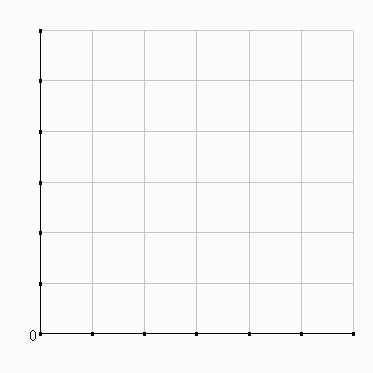|
|
Wednesday, March 06, 2013 |
III. Theory of the firm: production and costs
A. Production theory
2. Production in
the long run
c. Interpreting
isoquants
Note: Inputs = factors of
production
(1) factor
intensities
Pertains to factor combinations in
production
Example: capital per worker
(K/L)
| Consider 2 points on Q1 (b with more L and
less K than a): ?
which is more k-intensive?
Production technique a
is capital-intensive relative to b.
Useful in
--comparing industries and
-considering how production techniques respond changes in
resource prices
Examples of US industries
| Industry |
L-cost share |
K-cost share |
| crude oil |
32% |
68% |
| appliances |
61% |
39% |
| apparel |
83% |
17% |
|
 |
| |
|
(2) Returns to
scale (RTS)
Pertains to movements
between isoquants, holding factor intensity constant.
%DScale => the same %D for every input.
| |
Example: |
| |
|
K |
L |
%DScale |
| |
a |
10 |
20 |
|
| |
|
|
|
100% |
| |
b |
20 |
40 |
|
| |
|
|
|
50% |
| |
c |
30 |
60 |
|
| 3
RTS possibilities:
(1) %DQ = %DScale => CRTS (pumpkin pies /
wheat: 1/2/3)
(2) %DQ > %DScale => IRTS (costumes / water: 1/3/6)
(3) %DQ < %DScale => DRTS (Jack-O-Lanterns / bonsai trees: 1/1.5/1.8)
Why do RTS matter?
--optimal firm size: feasibility of competition depends on
returns to scale
--resource productivity: higher labor productivity =>
higher real wage
2 sources of higher labor
productivity:
(1) more K
per L
(2) output
rises faster than inputs (ex: IRTS) |
 |
Example: Cobb-Douglas:
See
worksheet
1. Q = BoLBLKBK
exponents =
elasticities:
BL
= eQ,L; BK = eQ,K
2.
%DQ
=(approximately)
(BL+BK)·%DScale
| |
%DL=100 |
%DK=100 |
|
%DScale=100 |
|
| Q |
%DQ=BL·%DL |
%DQ=BK·%DK |
BL+BK |
%DQ=(BL+BK)·%DScale |
RTS |
|
Q = BoL1/4K3/4 |
|
|
|
|
|
|
Q = BoL3/4K3/4 |
|
|
|
|
|
|
Q = BoL1/4K1/4 |
|
|
|
|
|
Note: For DMR to any input, its exponent
must be < 1
B. Costs for the
firm
Learning objectives: Calculate and diagram short-run
costs. Explain and illustrate how diminishing returns accounts for the way
short-run costs behave. Calculate, diagram, and interpret isocost lines for
long-run costs.
Any firm which maxes profits must minimize
costs
Economic cost of an input: the value of the input in its
best alternative use (i.e., its opportunity cost)
Most problematic: capital
Generally, if you borrow, you pay interest--this is a cost,
both to accountants and to economists
If you use equity capital, direct investment, accountants
call the return profit. But invested funds have an O/C very similar to borrowed
funds--those funds could have earned some return by being loaned out instead.
This foregone income is an O/C and is considered as a cost in econ.
Basic cost equation:
TC = pL.L + pK.K
+ p3.F3 + p4.F4 +...
PK includes the normal
return to K.
1. Short-run costs
Recall, in SR, some inputs are in fixed
supply. This results in fixed costs.
a. Total costs and
unit costs
Total fixed costs (TFC): Costs which do not change with output and which the firm must pay
even if Q=0.
Recoverable only if the firm exits from
the industry vs "sunk costs"; must be paid even with exit.
Total variable costs (TVC): Costs which change with the level of output.
TC = TVC + TFC
Ex. Here: pK.K
is fixed / pL.L is variable
| |
TC |
= |
PL.L |
+ |
PK.K |
| |
|
= |
TVC |
+ |
TFC |
Unit costs
2 main types:
(1)
marginal cost (MC) = DTC/DQ
the change in total costs associated
with a change in output.
In the SR, DTFC/DQ = 0, so
| |
DTC/DQ |
=
DTVC/DQ+DTFC/DQ = |
DTVC/DQ in SR |
= SRMC |
In SR, MC does not change with a change in
TFC.
(2) Average costs: costs per unit of q.
TC/Q = TVC/Q + TFC/Q
ATC = AVC + AFC
note: AFC falls continuously as Q rises
(it's a rectangular hyperbola)
b.
Resource productivity and short-run costs
Issue now: Why do a firm's SR costs rise as output
rises?
Recall: We started SR production theory by looking at
resource productivity
MPL, APL, diminishing returns
So what? We'll see so what now.
These resource productivity considerations determine the behavior of
firm costs.
Intro. econ: costs rise because as you hire more,
hire less well suited resources, pay higher prices for inputs, etc.--all false in general.
The truth: for most firms, as Q rises in SR, input prices are constant.
Quality of inputs is constant.
Unit costs rise in
the SR because of
diminishing returns.
(1) MC and
MPL
Suppose a firm wants to increase Q
? In the SR, what will the firm have
to do?
? What measures how much their costs
will rise?
? What do we call the extra output we
get?
We combine this information to calculate MC:
MC =
DTC/DQ =
DTVC/DQ =
D(PL.L)/DQ
= PL.(DL)/DQ = PL /
(DQ/DL) = PL/MPL
End result:
MC = PL/MPL
Notes: PL is constant
MPL rises => MC falls
MPL falls (because of DMR) => MC rises
Ex:
PL = $60
MPL = 40
? MC of the 40 extra units =?
Recap:
2 ways
to measure MC:
Method 1: given total cost and output data:
DTC/DQ
Method 2: given input cost and productivity data:
PL/MPL
In general, the information is about the same.
Choose the method which gives you
the more precise estimate.
(2) AVC
and APL
Works the same way:
AVC = TVC/Q = PLL/Q = PL/(Q/L) =
PL/APL
End result:
AVC = PL/APL
Again, APL rises => AVC falls,
APL falls (diminishing average returns) => AVC rises
